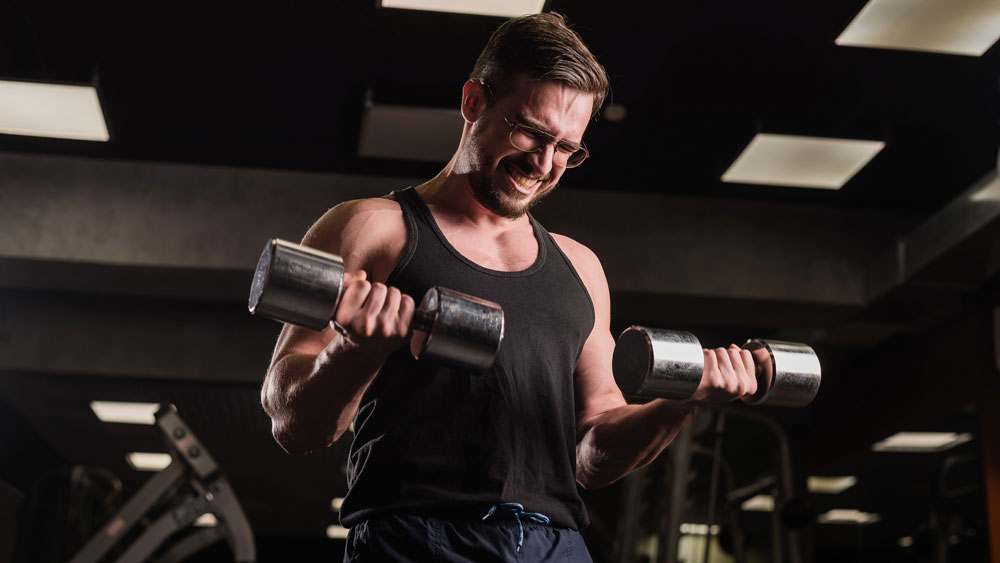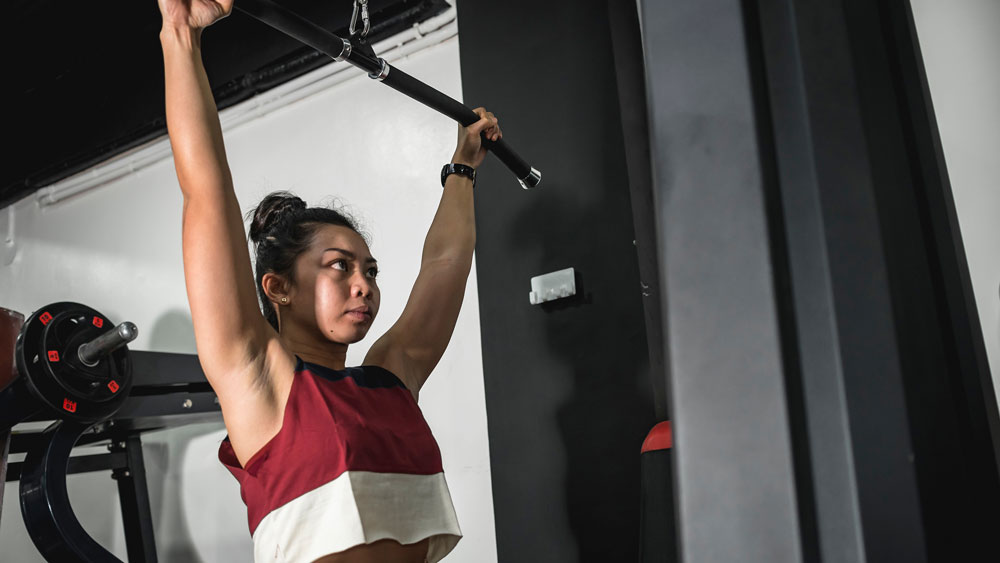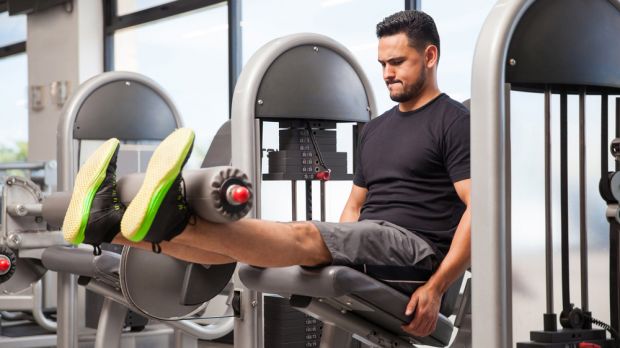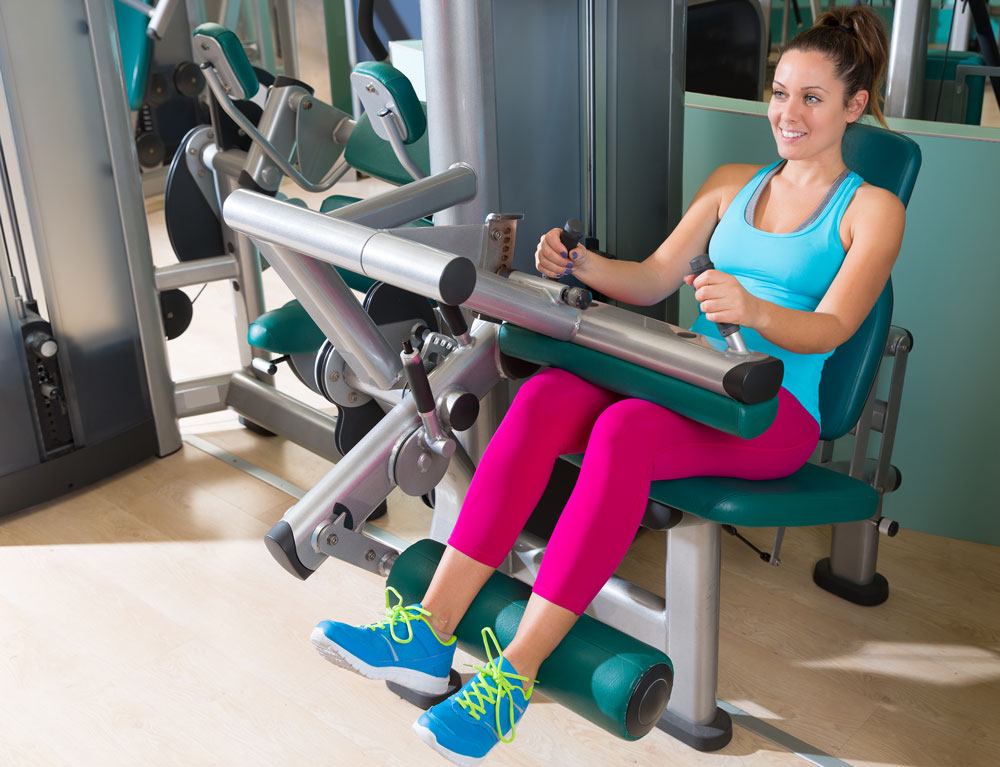
With drop sets, failure is the only option. That’s right: the goal of this fiendishly tough resistance training technique is to work a muscle group to complete fatigue – again and again.
Experienced exercisers use drop sets to break through stubborn training plateaus. They cause a shock to the system by design, but when used wisely – and most importantly, safely – drop sets can be an effective way to accelerate your gains.
The technique works like this: perform one set of an exercise, such as a dumbbell biceps curl, with a reasonably heavy weight until you can’t complete any more reps – known as going to failure. Without resting, switch to a slightly lighter pair of dumbbells and repeat the exercise until you can’t go on. Then lower (“drop”) the weight one final time, take a deep breath to steel yourself, and repeat.
In your training journal, the drop set would break down like this:
Set 1: Perform 8-10 reps, 0sec rest
Set 2: Drop weight by 10-30% and repeat for max reps, 0sec rest
Set 3: Drop weight by 10-30% and repeat for max reps, 2min rest
The Benefits Of Drop Sets
Drop sets aren’t for the casual exerciser. Every time you approach failure, each rep will flood the muscle being worked with lactic acid, which can lead to soreness in the days after a workout.
However, because drop sets can fully fatigue all the small and large fibres that make up a muscle group, research suggests it’s an effective way to increase muscle size, a process called hypertrophy.
Sign up for workout ideas, training advice, reviews of the latest gear and more.
Further research found an ability to boost muscular endurance that will keep you going for longer on the sports field or your weekend run.
How To Safely Use Drop Sets
Pushing your muscles to failure can be taxing on your central nervous system. For that reason drop sets should be used selectively and saved for the secondary, accessory lifts within a strength workout, according to Harvey Lawton, PT and founder of The Movement Blueprint.
“Drop sets are a great way to increase training volume and time under tension with any given movement,” says Lawton. “However, because you are working towards failure, it is vital you use exercises that provide stability for the joints and muscles.”
Lawton suggests reserving drop sets for isolated movement patterns, such as the leg extension, leg curl and plate-loaded bench press, because of the stability and therefore safety these machine moves offer.
“If using a barbell or dumbbells, you should always favour movements with a shortened range of motion, such as a dumbbell floor press instead of a dumbbell bench press,” he adds.
Drop Set Workout Pairs
Here’s Lawton recommendations for how to use the drop set protocol with exercises that safely target the chest, back, quads and hamstrings.
You can do the bench press and lat pull-down in the same workout, or the leg extension and curl in the same session, but Lawton cautions against doing all four moves in one go or you’ll struggle to extricate yourself from the machine, let alone the gym. To figure out the intensity you need, use the rate of perceived exertion (RPE).
“With each of the below, aim to perform the first drop set for 10 reps at 8/10 RPE, followed by almost max reps (leave one rep in the tank) at 6/10 RPE , followed by max reps at a lighter load,” says Lawton.
For the best muscle-building results, use minimal rest between drop sets and rest for 90 seconds to two minutes between full sets.
Plate-loaded bench press
Sets 3 Reps 10-plus Rest 0sec
Targets: chest, triceps
Lie on your back on the bench, with your feet planted on the floor and lower back pressed against the bench. Retract your shoulder blades, brace your core and press the bar or handles away from your chest. Lower under control and repeat.
Aim for 10 reps at 8/10 RPE. After the final rep, reduce the resistance by 10-30% and perform as many reps as you can before failure. Drop the weight once more and repeat for max reps. This drill would work similarly well with the seated chest press machine commonly found in gyms.
Lat pull-down

Sets 3 Reps 10-plus Rest 0sec
Targets: back, biceps
Sit in the machine with the supports holding your legs firmly in place and your back upright. Hold the handles with an overhand grip, hands around shoulder-width apart. As you exhale, pull the bar down until it’s level with the top of your chest, retracting your shoulder blades to engage all your upper-back muscles. Inhale as you slowly return the bar to the top of the move and repeat. As with the bench press, drop the weight each time you hit failure to maximise the muscle-building effect on your upper-back muscles.
Leg extension

Sets 3 Reps 10-plus Rest 0sec
Targets: quads
Adjust the seat position so that the support is pressed against your lower shins and thighs. Extend your legs powerfully to full extension, then slowly return to the start under control. After 10 reps, drop the weight for two further sets, focusing on the eccentric (lowering) phase of the lift with every rep.
Leg curl

Sets 3 Reps 10-plus Rest 0sec
Targets: hamstrings
Adjust the seat so the support holds the top of your thighs in place and you can comfortably push against the resistance with your heels or calves. Curl your legs powerfully to engage your hamstrings, then slowly return to the start under control. Repeat as with the leg extension for two further sets.

Sam Rider is an experienced freelance journalist, specialising in health, fitness and wellness. For over a decade he's reported on Olympic Games, CrossFit Games and World Cups, and quizzed luminaries of elite sport, nutrition and strength and conditioning. Sam is also a REPS level 3 qualified personal trainer, online coach and founder of Your Daily Fix. Sam is also Coach’s designated reviewer of massage guns and fitness mirrors.
